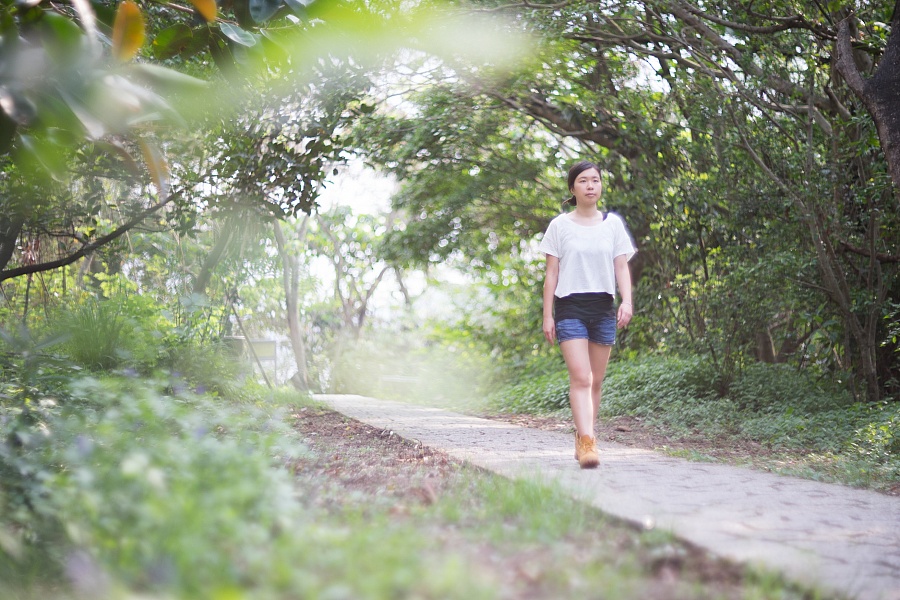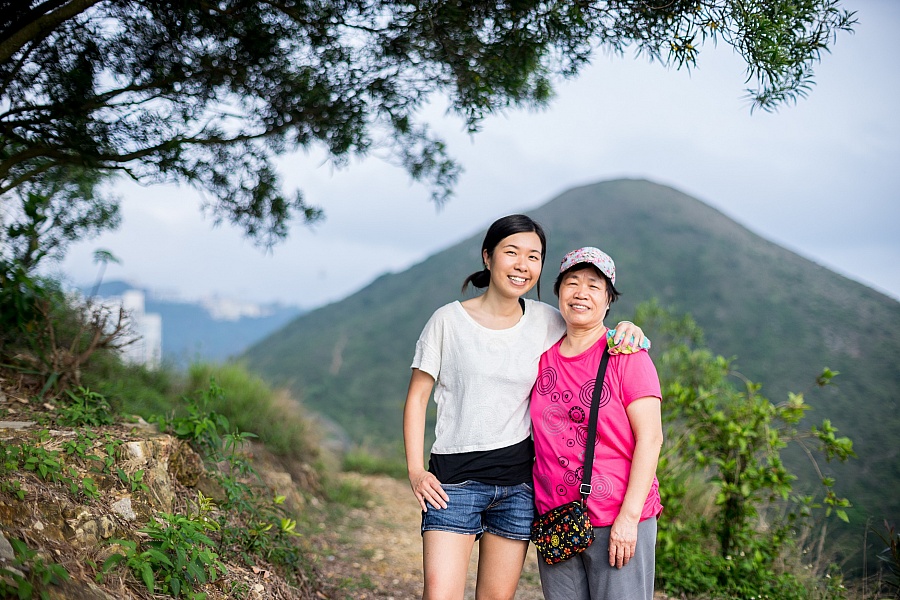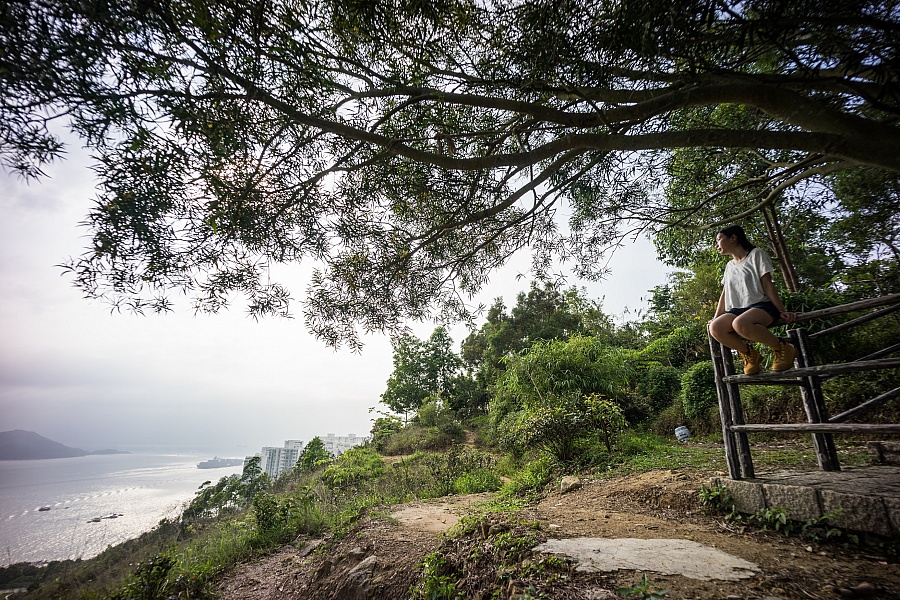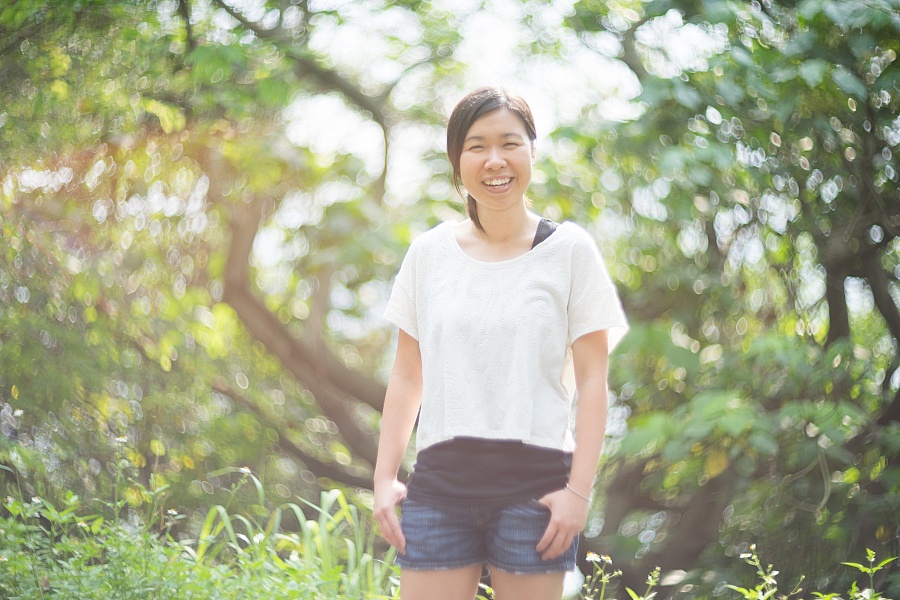Teacher, 30 years-old
“I spent most of my lifetime living in Southern District. I lived one year in Tin Wan, six years in Aberdeen, and moved to Ap Lei Chau until now. I once lived in the Olympian City in Kowloon, however, I didn’t really like their “Cake and Candle” layout.* I prefer streets and little shops, surrounded by kaifongs rather than tourists. I feel awkward when I wear flip flops to shop for groceries, while other visitors’ dress up for a film. So I moved back to the Southern District. I also plan to stay for some time.
A lot more tourists have visited South Horizons ever since the outlet opened. I come across people asking for directions nearly every time I go out. It has become yet another Olympian City. The same goes for the Ap Lei Chau Main Street nearby, where local stores have given way to middle-class shops. I’m bothered by the gentrification that displaces the existing bond between neighbourhood shops and the kaifong. Things have become more expensive, and our community is losing its appeal. One day, Ap Lei Chau might become yet another Causeway Bay. We have even less choices in South Horizons, especially after Marina Square West began kicking out independent stores two years ago. The situation is similar for Ap Lei Chau Estate, where only a few local stores survive. Other eateries belong to the same conglomerate. Eating out has become a luxury the elderly could not afford.
Aberdeen is another choice for groceries. Ap Lei Chau and Aberdeen is connected by the Bridge and the Typhoon Shelter. Residents shuttle back and forth frequently. I go to Aberdeen at least twice a week. The harbour is a calming presence every time I pass by the bridge. Aberdeen has all the grocers we need, but is also more crowded. Ap Lei Chau was once the world’s most densely populated island. But as a resident, I don’t feel it is crowded at all. The spacious feeling might have something to do with the hill that bisects the island.
I like hiking and getting close to Mother Nature. There is a hill in Ap Lei Chau called Yu Kwai Shan (Mount Johnston), which is 196 metres tall. We call it the “Real Yu Kwai Shan”. There is another hill between South Horizon and east estate (Lei Tung Estate). We call it the “Fake Yuk Kwai Shan”. I can reach “Fake Yuk Kwai Shan” in about 30 minutes. Ap Lei Chau is a small island, but it is rather spread out. “Fake Yuk Kwai Shan” marks the focal point of Ap Lei Chau. We meet people from east estate (Lei Tung Estate), west estate (Ap Lei Chau Estate), Main Street and South Horizons. It is a popular destination for a morning hike. The kaifongs have installed tables and chairs on the hill, some of them even farm on the terrain. As more and more people hang out, the Home Affairs Department has built staircases, but they also impose restrictions.
There used to be a stray dog living on “Fake Yuk Kwai Shan”. One kaifong felt sorry for the dog and fed it every day. As news spread, more people chipped in with food and daily necessities. Some fishermen in Lamma Island even brought steamed fish. The dog was eventually captured by the Fisheries and Agriculture Department. The kaifongs pooled some money together and sent the dog to a pet hotel until it passed away. Since the hotel was located in the New Territories, the kaifongs drove all the way for regular visits. All this seemed natural to the people. I think this hill really brings people together.”
*“Cake and Candle” layout refers to buildings which combine residential housing with shopping malls. The “cake” is the shopping complex at the base, whereas “candles” are the residential flats up top.






